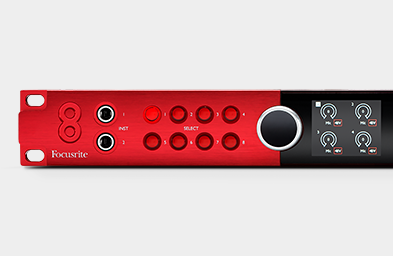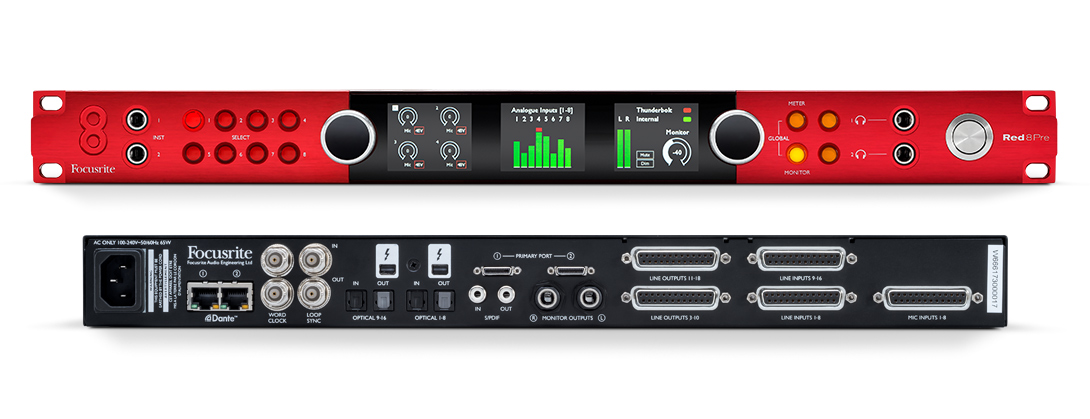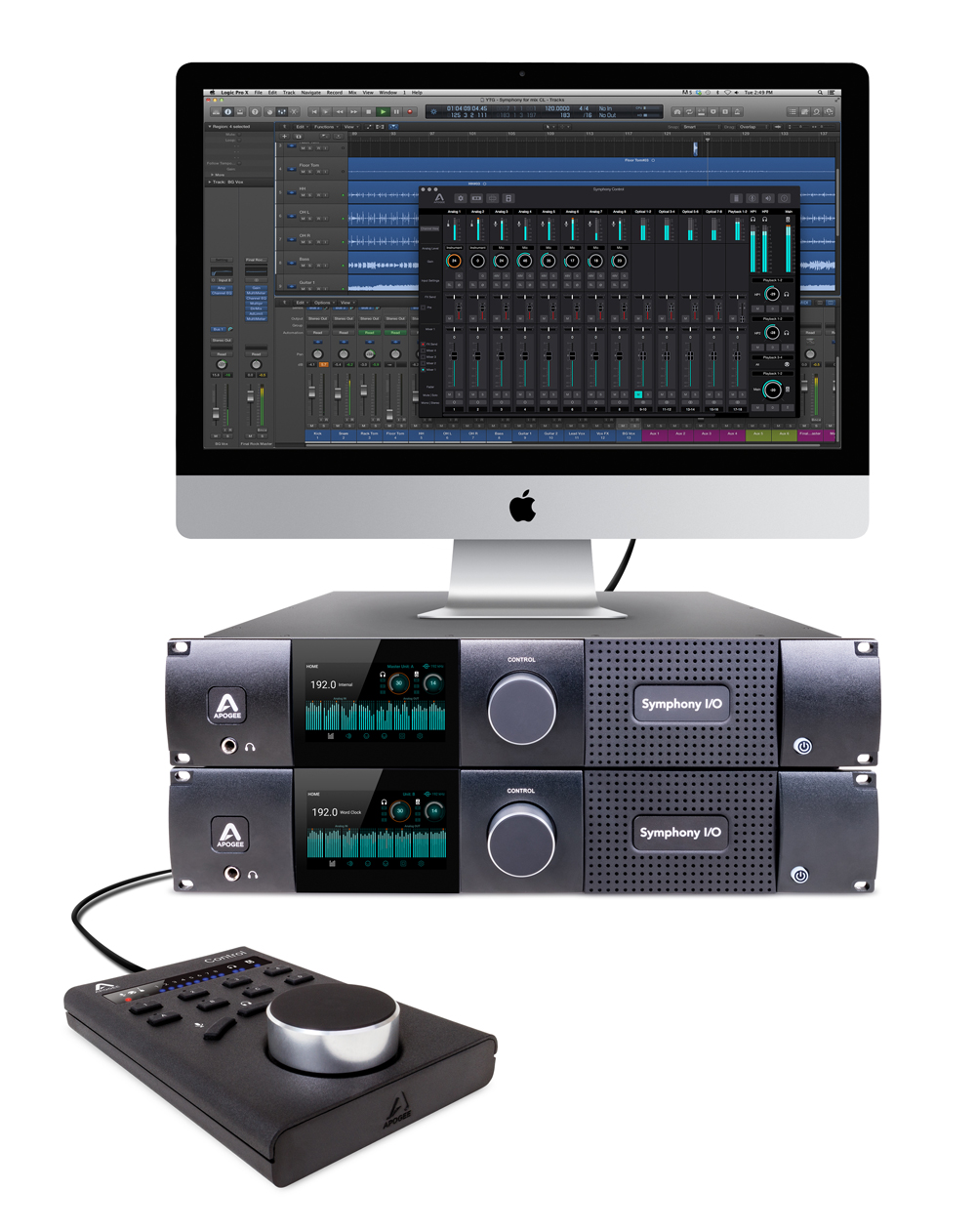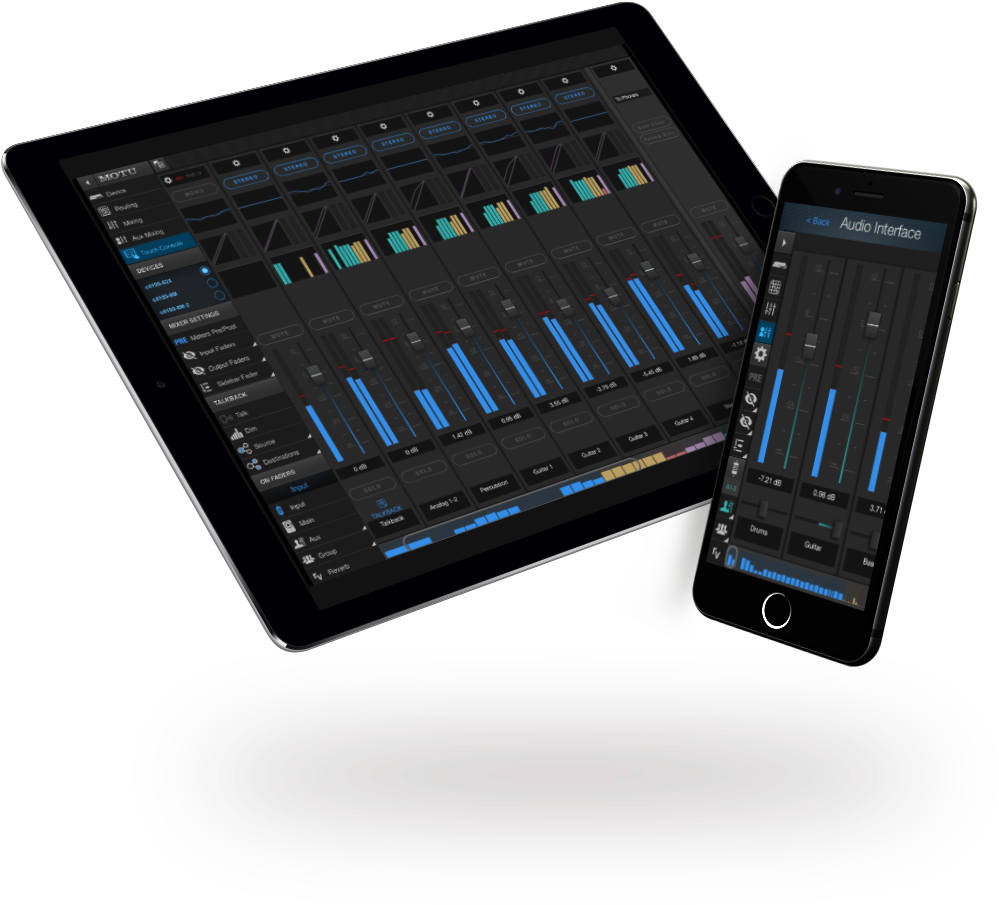Picking the Right Studio Centerpiece: What’s the Best 8+ Channel Interface for the Serious Studio?
Focusrite Pro Red 8Pre
$3999 street price

The Focusrite Red 8Pre has some seriously good sounding preamps and extra connectivity for serious studios too.
Right out of the box, Focusrite Red 8Pre fires up some intrigue and possibility.
It features Focusrite’s iconic red metallic design with 3 displays for various centerpiece functions.
This one can serve as quite the studio centerpiece, sporting 16 analog in/out via DSUB, along with built in Dante and built in Pro Tools hosting.
No extra cards or modules are needed for some pretty big track counts, and everything is in 1 deep rack space. That’s quite a bit of versatile I/O value with a pretty big sound. Even the Thunderbolt cable was included—which is rare these days!
The face of the panel sits as an elegant and eye-catching red in the rack with warmly glowing lights on the preamp and monitor buttons. Everything here says “flagship.” The sound is impressive and the AIR option on each preamp gives a nice coloration option to add to your microphones.
The preamps are fantastic, modern, uncolored yet full. You can certainly hear the lineage back to the original ISA 110. I had the pleasure of actually seeing and hearing the mythic Focusrite Studio Console after it was installed at BearTracks Studio. The preamps here reminded me of that character. They sound absolutely pristine, and the AIR function kicks in that “vintage’ transformer sound. Both drums and electric bass respond accordingly.
Of note special, the Red 8Pre comes with an impressive bundle of free native plug-ins including the Focusrite’s own Red 2 EQ and Red 3 Compressor native plug-ins, based on their acclaimed red series hardware. Also included is Brainworx’s Focusrite Studio Console strip which will give creative or nostalgic ears a kick.
Focusrite is certainly throwing everything at this “all in one” set up, although some minor add-ons would need needed for ideal hardware-controlled talkback or multi-monitoring functions.
The RedNet Control 2 program is simple and efficient, and the I/O Control and Metering display deserves its own screen to show exactly what is happening in your studio with the 8Pre’s massive I/O options.
With great preamps, massive onboard I/O, and included plug-ins of Focusrite lineage, the Red 8 Pre is a definitely a great way to get a truly elegant and expandable studio started in one rack space.
Apogee Symphony I/O MKII (8X8 + 8MP configuration)
$4999 street price
This 2U mainframe power plant of an interface drops impressively into the rack, and would be serve as a powerful heart for any studio.
This is the only truly modular unit of the bunch, offering various custom configurations based on your I/0, console, lack of console, and DAW.
Apogee highlights the optimal circuitry of the Symphony series and its modular capabilities as “future proof.”
There are so many possibilities here. DB25 breakout cables will allow the Symphony to seamlessly integrate into an established studio in 2X6, 8X8, or 16X16 configurations. For his roundup, we tested the 8X8 + 8MP which includes 8 built-in microphone pre-amps.
One unique feature of the Symphony is an onboard touchscreen which is not “cartoony” in the slightest, and designed with a kind of futuristic elegance. Monitor and pre-amp control can easily be be handled here, and a huge double rack size control knob can pump through adjustments for headphone, monitor, or pre-amp gains.
Speaking of headphones, the front jack headphone monitor on the Symphony is a most welcome sonic experience, and an extremely useful critical listening device. It struck me as one of the best integrated headphone amps I’ve heard in an interface.
Apogee’s new Symphony Control software also brings a number of welcome enhancements that can compliment pretty much any DAW set up. The “Essentials” window is a particularly nice touch that provides a horizontal or vertical strip which sits well next to your DAW window with handy meters, level controls, and a built-in artist talkback button at the ready.
Navigating and configuring any I/O scenario is pretty straight ahead with Symphony Control. One interesting feature is the stackable, color-coded mixers that mapto the individual analog output.
The microphone pre amps of the +8MP module have really stepped up the built-in preamp game. If your setup requires a solid set of uncolored mic pres, then these are definitely worth auditioning. There are 8 reference-quality channels with a clean and minimal signal chain, offering critical transparency, approaching the quality of the most elite uncolored outboard units. Considering how “rock & roll” the original Apogee Ensemble was in tone, this is a most welcome development for workspaces that cater more to acoustic, symphonic, chamber music and jazz.
The Symphony is a high-end precision engineered instrument that delivers every detail into each audio file. Being both “state of the art “and “future proof’ at the same time would seem impossible, but this centerpiece delivers a serious return on investment in both categories.
The pre-amp module could save you some serious money on an additional outboard 8-channel transparent pre-amp. (Yes, it’s that good.) Hands down, it offers the best onboard display screen of the bunch. Even if you are wary of touchscreens, you should definitely give this one a try. On this unit, it’s far from a gimick, and makes you feel like the future is now.
MOTU 8pre-es
$1195 street price
While not quite the nostalgia level of a Focusrite Studio Console, I couldn’t help but reminisce on the trusty MOTU 896. That unit served so many so well, and, was a hit in both the popular and classical music worlds.
While many interfaces and software get hung up on drivers or OS versions, MOTU products simply network with anything and everything. That tradition remains blatantly apparent with the 8pre-es, which takes audio networking to a whole new level. And like the trusty 896, it does it at a very attractive price point.
As usual, one of MOTU’s touches includes a real printed instruction manual, a feature that seems to be disappearing as of late. The unit is compact and remote-recording friendly, and has a clean panel with 4 gain controls. As capable as some of the single knob designs can be, I find it’s always nice to have more than one physical gain control.
Talkback and monitoring options are easily accessible, and there are good colorful display options on the 2 LCD screens. This unit can modify itself to fit into practically any future need as an interface, stand-alone mixer, live recording with monitor mix, network expansion, or optical converter. Also bundled is an impressive Audio Tools program with FTT, Spectrogram Analysis, oscilloscope, X-Y Plot, and Phase Analysis metering for any input.
MOTU’s Pro Audio Control is actually run from a web browser on the local network of the 8pre-es, which I found very intriguing The included software is run with DSP from the unit itself and never touches your computer’s CPU.
Part of that onboard DSP includes power for an impressive virtual large format mixing console with built in gate, compression, EQ, and reverb that could easily run a show, thanks to MOTU’s rock solid live performance pedigree. The mixing console is powerful and flexible, and the graphic EQ and compression curves look great on any display.
The key word here is “networking”. While it would serve well as a centerpiece of any studio, chaining together MOTU units can turn it into so much more. AVB Ethernet allows you to connect an additional interface via CAT5. I added on a MOTU 624 interface that appeared instantly in Pro Audio Control and found a number of interesting networked possibilities.
Cleaning up a long drum cable run, adding in a special monitoring station, and even setting up an echo chamber are all super easy with this system. This network can also be accessed from MOTU’s AVB Discovery app on iPad or iPhone for remote control from anywhere in the studio or venue.
Despite the remarkably affordable price point, the sound offered here is competitive as well. There is good clean gain with MOTU’s latest ESS Sabre32 Ultra converters, and thanks to the Pro Audio Control console, you can efficiently EQ any monitor or live sound output.
Most of all for me, this unit’s ability to morph into an efficient live sound console (with measurement tools!) is a ridiculous value. This piece is an affordably fully functional studio centerpiece, but would adapt to many useful roles for any studio, venue, or installation.
Summary
The innovation and design imbedded in each of these units is inspiring, and there is a lot to like about each piece on this list.
Each company has woven so much of their historical strengths into the design and sound:
Universal Audio practically defined classic analog sound, Apogee upgraded the quality of A/D conversion forever, Antelope redefined and perfected word clock, Focusrite may have built the most coveted channel strip ever, and MOTU continues to create powerful networking tools, better connecting musicians and their computers.
Of the interfaces in this set, only Antelope and Universal Audio are utilizing the latest Thunderbolt 3 (USB-C) standard, which certainly gives their notable DSP power an added kick. Both of their offerings adds just as much power for mixing as they do for tracking. They both would serve studios that tilt towards a more ‘in the box” situation exceptionally well, are could be quite practical for remote recordings as well.
Meanwhile, the Symphony and Red 8pre can be of especially tremendous benefit to larger and more established rooms—especially those that already have some outboard and I/O in line and don’t need too much additional processing power. They are the only units without XLR inputs and that require DSUB breakout cables for analog connection. They are also the only two to offer Dante connectivity and all the advanced digital networking it brings.
Finally, the MOTU is friendly to more modest budgets while offering all the essentials. It has an incredible networked large console simulation, and is so easily and creatively expandable.
Of course, a big consideration is each unit’s virtual console software, and many of the preferences here are going to come down to taste.
There are stark differences in the visual aesthetic and functionality between UA’s Console app, Symphony’s Control, Orion’s Control Panel, Focusrite’s RedNet Control, and MOTU’s web-browser-based Pro Audio Contro. I highly recommend viewing the control tutorials of all the programs before locking yourself into such a vital part of your work room.
It’s a good time to be shopping and planning a new room or an upgrade, and it’s hard to go wrong with any of the choices on this list. Do you have your own favorites? Let us know about them in the comments below. The marketplace is alive with enhanced engineering, fidelity and functionality. So find your studio instrument, learn some technique, and make some music!
Christopher Swist is owner and head engineer at EvenFall Studio LLC in New Hampshire. He is also Resident Artist at Keene State College and teaches Music Technology, Composition, and Percussion.
Please note: When you buy products through links on this page, we may earn an affiliate commission.












[…] Ultimately, upgrades become necessary with time, and having a studio or Read more… […]